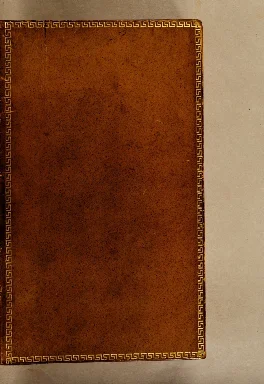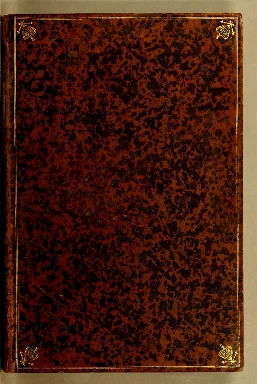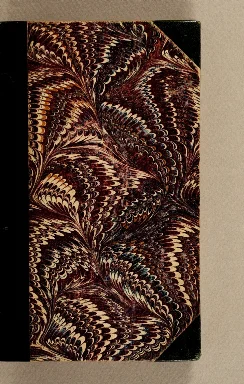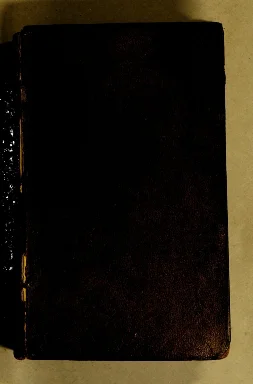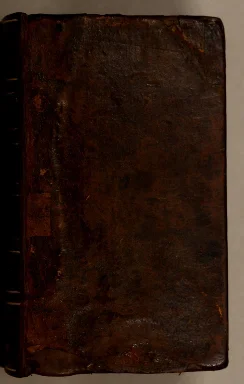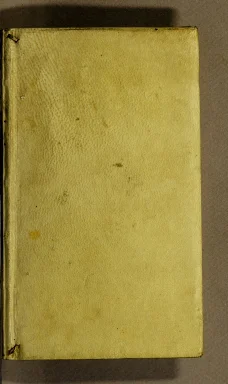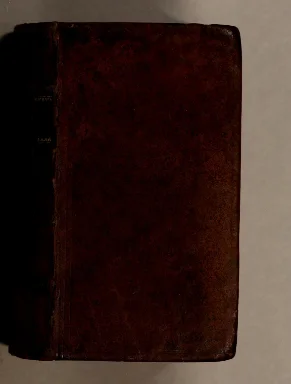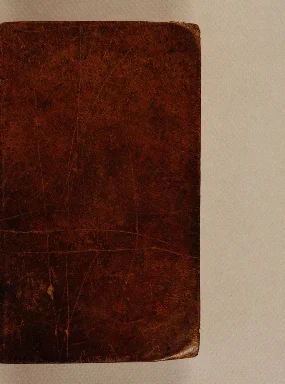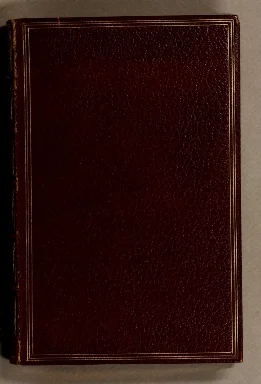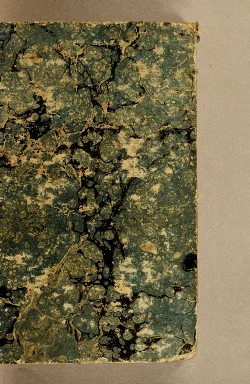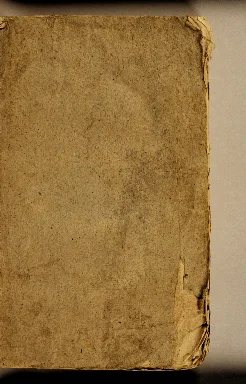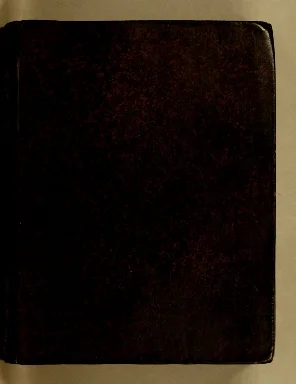1. The Beginning
The life and strange surprizing adventures of Robinson Crusoe
1719
-
 p. 8
p. 8A New Genre
Defoe created a new genre of the Enlightenment novel with Robinson Crusoe, the Robinsonade, which emphasized individual experience rather than the trials of a group in episodes of shipwreck, marooning, and contact with alien cultures. It is the psychological development of the character ol Crusoe which sets him apart from contemporary narratives. It is difficult to over-emphasize the influence of Robinson Crusoe, not only on a generic level, but also within the course of English literature and the history of ideas.
Tobias Smollett and Oliver Goldsmith owed much to Crusoe, and Samuel Johnson ranked it with Don Quixote and The Pilgrim’s Progress. Rousseau prescribed it as required reading for a natural education, and Karl Marx used it to explain his theories of labor value. It was immensely popular—going through four editions of 1,000 copies each in the first four months, and by the end of the year appearing in French, German, and Dutch translations. The copy displayed here is the fourth edition, brought out in August, 1719.
A new voyage round the world
1697
-
 p. 1
p. 1Source for Defoe & Others
Dampier's New Voyage was almost a bible for writers of fictional voyages. It was quite popular, going through four editions in two years. Robinson Crusoe was thought to have been inspired by the experiences of Alexander Selkirk, a Scottish sailor under the command of Dampier who, after quarreling with the captain, asked to be put ashore on the uninhabited Pacific island of Juan Fernandez in 1704. He was picked up five years later by Captain Woodes Rogers, and returned to England in 1711. Selkirk's story was written up by journalists and made its way into Rogers' A Cruising Voyage Round the World (1712).
A new voyage round the world
1725
-
 p. 1
p. 1Armchair Traveller
Only briefly believed to be an actual voyage by its readers, the work shown here was primarily a propaganda piece for English South American ventures. Defoe had an active interest in encouraging England to compete with Spain in exploiting the resources of South America, to the extent that he devised colonizing plans for King William and Robert Harley, Earl of Oxford. Most of the information in this work was derived from actual travel accounts like Dampier—in fact the title is an intentional parody of Dampier's New Voyage.
Des Herrn Juan de Posos Beschreibung des mächtigen Königreichs Krinke ...
1748
-
 p. 8
p. 8Source for Crusoe?
Another possible source for Robinson Crusoe is this work by Smeeks, which operates both as a utopia and a Robinsonade. It is the story of a Dutchman who recounts his early life in the military, his switch to a merchant career, his trips to America between 1679 and 1698, and his assumption of a Spanish identity (Juan de Posos) in order to sail from Panama to the Philippines in 1702 to make his fortune. A storm drives his ship onto the coast of the southern continent (Australia), and he and his scouting party are captured by warriors of an advanced civilization—the kingdom of Krinke Kesmes, an anagram of "Enrikk Smeeks." Later editions capitalized on the popularity of Robinson Crusoe. Compare the image shown here with the frontispiece of Defoe's work.
The voyages, dangerous adventures and imminent escapes of Captain Richar...
1720
-
 p. 9
p. 9On the Coat-tails of Defoe
Chetwood, one of Defoe's booksellers (notice his name on the title-page of Crusoe), capitalized on the success of Robinson Crusoe. Chetwood served as a prompter at Drury Lane Theatre for at least twenty years, and as a dramatist he gained a knowledge of current taste in entertainment. This is one of several picaresque sea adventures attributed to him. The supposed "true" narrative of Captain Falconer is a jumble of piracies and shipwrecks on desert islands in the Caribbean and Gulf of Mexico.
The voyages and adventures of Captain Robert Boyle
1728
-
 p. 1
p. 1Panned by Critic
The first edition of this work was published in 1720, and was certainly another instance of Chetwood's market savvy. The (then anonymous) writer of the work was called a "blockhead, and a measureless, bungling liar" by George Steevens (1736-1800), a literary critic and friend of Samuel Johnson who was known for his sour appraisals. This opinion is an example of the resistance by contemporary academicians to realistic fiction (the "novel"). To them, writing stories as if they were true equalled lying, and deceit had no rightful place in literature.
The English-American his travail by sea and land: or, A new survey of th...
1648
-
 p. 7
p. 7Chetwood's Source
The English Dominican Thomas Gage was almost certainly a source for Chetwood and other "voyage" writers who used the Caribbean as a setting. Although Gage hated the Jesuits, he was smuggled to the Philippines and on to Mexico with French missionaries of that order, and his descriptions of Spanish-held regions forbidden to Englishmen, with their riches and inadequate defenses, whetted the public's desire for conquest. Gage was later appointed chaplain for an English West Indies expedition that failed to take Hispaniola in 1654, but succeeded in taking Jamaica—where he died in 1656.
The hermit
1754
-
 p. 1
p. 1Crusoe Imitation
This work was considered by some as one of the best imitations of Robinson Crusoe in English. It remained anonymous until a rare first edition (1727) was discovered in 1921, in which the dedication was signed "Peter Longueville." Whole passages of it can be shown to have been lifted from William Dampier, and the famous contemporary essayist Charles Lamb commented, "I do not know who wrote Quarll. I never thought of Quarll as having an author. It is a poor imitation; the monkey is the best in it."
The life of Charlotta Du Pont
1723
-
 p. 1
p. 1Crusoe Feminized & Moralized
Penelope Aubin's family had moved to England from France during the Huguenot emigration of 1685. She became the perfect example of a successful Grub Street hack, and was by turns a poet, editor, translator, and dramatist. With more market acumen than literary talent, Aubin produced a series of fast-paced pious romances which told of the triumph of virtue in a hostile world. Aubin promises that her book "contains the greatest Variety of Events that ever was published." Works such as the one displayed here had a significant influence on subsequent novelists—such as Abbe Antoine François Prevost.
The four years voyages of Capt. George Roberts; being a series of uncomm...
1726
-
 p. 1
p. 1Attributed to Defoe
This anonymous narrative begins as a trading voyage from London to the West Indies, continues as a pirate capture, shipwreck, and survival tale among the Cape Verde Islands, and ends as a description of those islands. It was tentatively attributed to Defoe in 1830, and the controversy about the book continues to simmer. There was a Captain George Roberts, so it is just possible that the tale was based on a true voyage. Whether or not Defoe wrote the work is another question, but the most recent critical bibliography (1998) excludes it due to a lack of evidence. Anonymous works attributed to Defoe number in the hundreds.
Naufrage et aventures de monsieur Pierre Viaud, natif de Bordeaux, capit...
1770
-
 p. 7
p. 7Reads Like a Novel
Pierre Viaud was a real person who left St. Dominique (Haiti) as a passenger on a merchant ship bound for New Orleans on January 2, 1766. His story, instantly popular upon publication, has been treated both as a novel and as a real event, and is still debated (its most recent editor assigns it more truth than fiction). A storm blew Viaud's ship off course and onto a sandbank near Dog Island off the coast of Florida. There were 15 survivors; six of these—the captain, his wife and child, his business partner, a black slave, and Viaud—were taken by Indians, robbed, and marooned. The captain and his partner drowned while attempting to reach the mainland in a rotten canoe. The remaining four fashioned a raft, left the boy behind because he was ill, and set out for the mainland. Four days later a starving Viaud killed the slave, and he and the captain's widow ate him. After ten more days they were rescued, as was the boy a bit later.
2. The Extraordinary Voyage
The adventures of Telemachus
1787
-
 p. 7
p. 7Dangerous Ideas
Fenelon, tutor to the Due de Bourgogne (the grandson of King Louis XIV), was exiled in disgrace for his teachings, among which were his arguments for the separation of church and state and the elevation of the good of the people above the whims of the monarch. This voyage was written as a pedagogical tool for his pupil, and contained many of the ideas that contributed to Fenelon's exile. Unlike most of the later writers who used foreign geography to displace or hook the reader, Fenelon uses time and myth (the ancient Mediterranean of the Odyssey). The first edition was published in Paris, 1699, as the Aventures de Telemaque; the edition shown here is a dual language version, with the original French on the verso and the English translation on the recto.
Voyages et avantures de Jaques Massé
1710-1734
-
 p. 9
p. 9French Literary Landmark
Patot is considered by many to be one of the foremost French writers of imaginary voyages, and Jaques Masse is regarded as a landmark in the development of the French voyage novel. The narrative is full of tales of intrigue and romance, and Massé meets (among others) a stoical Chinese persecuted by the Inquisition in Portuguese Goa, and an atheist renegade Huguenot in Algiers. While its sources are both real and imaginary, this work exhibited significant elements of realism, which was the signature of the "new" (novel) fiction.
A voyage to the East-Indies
1698
-
 p. 1
p. 1Source of Patot
This is an English translation of a true voyage by the physician Gabriel Dellon, first published in French in 1685. Patot's main character Jaques Massé, seems to be patterned on the real Dellon. They are both physicians, both get captured by pirates, and both lose two crew members on the same island (Ile Bourbon). The most compelling parallel is Dellon's description of the Inquisition at Goa, to which the fictional Jaques Massé is also subjected. Dellon's account was so popular that he expanded it in later editions.
Travels and voyages into Africa, Asia, and America, the East and West-In...
1696
-
 p. 1
p. 1Another Patot Source
This is the first English translation of Jean Mocquet's Voyages (Paris, 1616), which also seems to have influenced Patot's Jaques Massé. The main parallel centers around the Inquisition at Goa. Mocquet mentions a talkative Chinese man whom he met at Goa; similarly, while awaiting his trial, the fictional Jaques Massé has a long discussion with a Chinese man about the Jesuit missions in China.
La vie, les avantures, & le voyage de Groenland du révérend Père Cord...
1720
-
 p. 1
p. 1The First of its Kind
This, the first French imaginary voyage set in the far north, grew primarily out of Patot's Jaques Massé. The main character, Mesange, suffers ill fortune (including meeting the author's father!) until he joins the crew of a Dutch whaling vessel in 1669. The ship gets caught in the ice and, after a few narrow escapes, Mesange and a few companions arrive in Greenland. The natives take them to an underground city, the hero learns the language and the history of the Greenlanders, discovers the North Pole, and is banished for refusing to marry an extremely ugly relative of the king. His escape from Greenland with two companions is followed by adventures in Iceland, Denmark, Poland, and (finally) Germany.
Relation d'un voyage du pole Arctique au pole Antarctique par le centre du monde
1723
-
 p. 1
p. 1Subterranean Voyage
This anonymous work, published three years after Patot's Voyage de Groenland and obviously taking advantage of the popularity of north polar voyages, contains a twist: an arctic whirlpool sucks the hero and his companions into the center of the earth. The illustration shown here is one of several decorative but nonsensical images inserted in the book.
Le nouveau Gulliver, ou Voyage de Jean Gulliver, fils du capitaine Gulliver
1730
-
 p. 1
p. 1Son of Gulliver
Desfontaines (1685-1745) was a French critic and translator who, despite his conservatism about the "new" writing in France and England, managed to take advantage of the market by translating Gulliver's Travels and by writing this story about Gulliver's son.
Le philosophe anglois, ou histoire de Monsieur Cleveland, fils naturel d...
1744
-
 p. 1
p. 1Life Mirrors Art
First published in 1731, this immensely popular novel centered on the amorous adventures of Cleveland, the supposed illegitimate son of Oliver Cromwell. Cleveland chases Fanny, his beloved, through Rouen, Cuba, Virginia, Florida, and finally Cuba (again), in what is perhaps the speediest expedition through colonial America ever recorded. The life of Prevost read like his novels. Twice a Jesuit, a Benedictine monk, a soldier, then a Protestant convert, Prevost was always running from political and religious authorities, his publishers, and even his father, who threatened to blow his brains out for repeatedly breaking his monastic vows.
Les avantures de Monsieur Robert Chevalier, dit de Beauchêne, capitaine...
1732
-
 p. 9
p. 9Based on a True Story
Le Sage is most famous for his adventure story Gil Blas (1715), a lengthy comedy of manners that influenced many writers of the eighteenth century. The adventures of Robert Chevalier (shown here) relate the career of a man who was born near Montreal and raised by the Iroquois, and is based on a real account.
3. Second Wave
The life and adventures of Joe Thompson
1750
-
 p. 1
p. 1Tales of Virtue
Edward Kimber (d. 1769), a novelist and a compiler for booksellers, apparently eked out a paltry living and died almost destitute. The three novels shown here were written to "instill virtue in the readers... not to celebrate badness." The running theme in many of Kimber's novels is the triumph of the natural talent and luck of young heroes (representing the common man) over the evil imposed by older, morally corrupt adults (representing established order), ideas that interested many people in the years preceding the French Revolution.
The female American; or, the adventures of Unca Eliza Winkfield. Compile...
1767
-
 p. 5
p. 5Entrepreneurs (I)
Francis and John Noble, booksellers and publishers, established one of the first circulating libraries in London in 1739. Some books were published by both firms, like the one shown here. This is the story of a female Robinson Crusoe in Virginia. This work was published after purportedly being found among the papers of the editor's late father—such fictions contributed to the verisimilitude of the stories.
Daniel De Foe's Voyage round the world
1787
-
 p. 1
p. 1Entrepreneurs (II)
This 1787 version of Defoe's armchair voyage, its content adjusted to the times, was re written by Francis Noble and is an example of how booksellers profited by the lax restrictions on literary piracy in the eighteenth century. Defoe's account of Patagonia and its potential as a colony is replaced by a description of Botany Bay in Australia, as depicted in the voyages of Captain Cook in the late 1770s.
The voyages, travels, and wonderful discoveries of Capt. John Holmesby
1757
-
 p. 7
p. 7Entrepreneurs (III)
This satire of European policy, cloaked as the adventures of a Captain John Holmesby, was also a creation of Francis and John Noble. The main action takes place on a Pacific island-nation called Nimpatan. Supposedly created by a great whirlpool long ago (the plant life was "generated" from hardened slime), Nimpatan is inhabited by a race of noble savages who live to be "three thousand moons" (over 200 years). Among the maxims of this nation are: "All measures are lawful to gain a crown"; "Cover your ambition, lust, or avarice, with a show of love to your country"; and "Do you want to invade any nation? Swear that it assisted your enemies. The pretence will do."
The voyages, distresses and adventures of Capt. Winterfield
1800
-
 p. 1
p. 1Thriller
This satire of European policy, cloaked as the adventures of a Captain John Holmesby, was also a creation of Francis and John Noble. The main action takes place on a Pacific island-nation called Nimpatan. Supposedly created by a great whirlpool long ago (the plant life was "generated" from hardened slime), Nimpatan is inhabited by a race of noble savages who live to be "three thousand moons" (over 200 years). Among the maxims of this nation are: "All measures are lawful to gain a crown"; "Cover your ambition, lust, or avarice, with a show of love to your country"; and "Do you want to invade any nation? Swear that it assisted your enemies. The pretence will do."
Voyages and travels of Fletcher Christian
1798
-
 p. 1
p. 1Mutiny!
Fletcher Christian was master's mate on the Bounty, and the leader of the mutineers against Captain Bligh on the morning of April 28, 1789. The work shown here purports to be a series of letters from Christian before, during, and after the mutiny. According to the Dictionary of National Biography the book is an "impudent imposture," which is likely, since many passages are obvious copies of Bligh's own published account.
The life and adventures of Peter Wilkins
1784
-
 p. 1
p. 1Posthumous Fame
This is the only novel (and single claim to fame) of Robert Paltock, which was first published in 1750. It fell rather flat in the eighteenth century, but the Romantics of the early nineteenth century admired it so much that its place in literary history was assured. Its most interesting fantastical element is a race of people who fly—the men are "Glumms" and the women, "Gawreys." Wilkins (the hero) is shipwrecked on an island, and is swept down a cavern while exploring. Following a five-week subterranean journey he arrives in an Eden-like country, falls in love with a Gawrey named Youwarkee, and after a time decides to "civilize" the natives by introducing gunpowder, concepts of money and trade, abolition of slavery, and the Christian religion. Patlock critiques the benefits of such civilization by showing Wilkins' reservations about his cultural interference.
Gulliver revived
1787
-
 p. 1
p. 1Baron Munchausen
The adventures of Baron Munchausen are popular to this day, as witnessed by the film of the same title directed by Terry Gilliam (1988).
The first (unknown) and second (1786) editions sold few copies, but an enterprising bookseller bought the copyright and added fourteen new chapters, which contained topical allusions to English institutions and recent books of travel. The best guess as to authorship is Rudoff Erich Raspe, who was a librarian, scholar, and journalist. Raspe's inspiration was an old soldier named Hieronymous von Munchausen (1720-1797), who developed a habit of telling wildly outlandish tales with a straight face in order to divert his guests. Raspe was a prolific writer and translator and drew from a wide base of expertise, but the popularity of Munchausen did not occur until after his death. Shown here are two of the most successful editions, as well as Nicholas Brown's (John Carter Brown's brother) own boyhood copy.
4. Imaginary Places
Ad lectorem. Habes candide lector opusculum illud vere aureu[m] Thomae M...
1517
-
 p. 9
p. 9The Utopia
Although Sir Thomas More's Utopia (first published in 1516) was written 200 years before Robinson Crusoe and the other imaginary voyages in this exhibit, its influence on them was profound. "Utopia" has as its elements the Greek ou topos, or "no place." The first known utopia in western literature can be found in Homer--Phaeacia in the Odyssey. Sir Thomas More invented a completely new literary form by isolating this idea, and creating/he utopia. Written in Latin and addressed to the learned community in the sixteenth century, More's Utopia had among its champions the great humanist scholar Erasmus.
Mundus alter et idem. sive Terra Australis antehac semper incognita; lon...
1643
-
 p. 1
p. 1Voyage + Utopia
First published in 1605, this work by Joseph Hall is the figurative meeting-place of two traditions, one dating from classical times (the Menippean tradition), and the relatively new utopian tradition. Mennipus was a freed Phoenician slave who founded a style that parodied Homer and exoticism in general. This was followed by Roman writers such as Seneca, Petronius, Varro, and Lucien, and later by humanists such as Joseph Hall. Hall's work carried on this tradition, mocking exploration and discovery by using an allegory of a man's voyage through life. The "hero," Mercurius Britannicus, voyages to the great Southern Land (assumed by many cartographers to exist in order to "balance" the northern lands), only to find himself abandoned in a world of moral failings. Shown here are the allegorical regions of the Southern Land—Pamphagonia (gluttony), Ivronia (excessive drinking), Moronia (land of fools), Viraginia (amazons), and many others.
A discovery of the Island Frivola: or, the Frivolous Island
1750
-
 p. 1
p. 1Frivolous France
The island of Frivola is constructed as a critique of France. The inhabitants of the island (Frivolites) write poetry and romance, and care nothing for scientific learning, mineral wealth, or military strength. The fruit on the island is pretty, but unsustaining, and the animals have claws that only tickle. Supposedly this work is a narrative of a sailor serving under Admiral Anson, who's popular A Voyage Round the World in the Years 1740-1744 was published in 1748. In the book shown here, Anson and his crew discover that Frivolia was once a great nation, until French colonists arrived and infected the capital (the city of Wit) with Parisian fashions.
Voyage de Robertson, aux terres australes
1766
-
 p. 7
p. 7Philadelphia as Utopia
This is the first edition of what pretends to be a French translation of the journal of an Englishman who sailed to South America with Sir Francis Drake. We are told that the natives in these "southern lands" live "la vie douce et innocente" (a sweet and innocent life), and that the narrative of these events inspired William Penn to found an ideal city in British North America. This thinly veiled political essay is cast in the form of a philosophical odyssey—one of a number of such works that appeared in France mid century.
L'an deux mille quatre cent quarante
1771
-
 p. 3
p. 3Fuel for Revolution
Louis-Sebastien Mercier (1740-1814) was a playwright who produced almost 60 drames bourgeois (middle-class dramas), and wrote this novel, in which an eighteenth-century Rip Van Winkle falls asleep and wakes up in the year 2440, where he finds himself in an ideal nation-state. Variously attributed to Rousseau and Voltaire, "The Year 2440" remained anonymous until the mid-1780's, although Mercier was the suspected author by 1774. The book was strictly banned in France, and hugely popular. It was routinely smuggled in, or printed in France with a false title-page to obscure the imprint, as is the suspected case here. One conservative estimate is that 18,000 copies were in print in three languages by 1772, and perhaps 63,000 copies existed at the time of Mercier's death.
Memoirs of the year two thousand five hundred
1772
-
 p. 7
p. 7First English Translation
This is the first English translation of Mercier's novel, which did not become truly popular in England until the end of the century. Hooper, the translator, explains that he changed the year from 2440 to 2500 "for the sake of a round number," and claims that this is the only significant (if idiosyncratic) alteration from the French original. Mercier predicts that "the names of the friends, the defenders of humanity, shall live and be honored, their glory shall be pure and radiant; but that vile herd of kings, who have been, in every sense, the tormentors of mankind, still more deeply plunged in oblivion than in the regions of death, can only escape from infamy by the favor of inanity."
Memoirs of the year two thousand five hundred
1795
-
 p. 1
p. 1Memoirs of the Year
Two Thousand
This first American edition of Mercier's novel, based on Hooper's translation, was not very popular, but it was the first utopian novel published in North America. George Washington owned a copy, and Thomas Jefferson had a copy of a 1771 French edition in his library (now in the Library of Congress).
Viages de Enrique Wanton
1778-1785
-
 p. 1
p. 1Spanish Interest in Utopia
This Spanish translation of an Italian work, first published in Venice, 17 49, contributed to
Spain's sudden interest in accounts of utopian societies in the 1780s. Possibly this interest
came from the entrance of Spain into the American War of Independence (1779) with the promise of territorial expansion--Spain seized Florida, Honduras, and Minorca in 1782.
Spanish interest in imaginary voyages was certainly galvanized by the first free flight of a
balloon with human passengers in France on November 21, 17 8 3. Translated and
expanded by Joaquín Vaca de Guzmán y Manrique, this work is meant to be a "sharp satire of vices, in which all nations abound."
5. Travel Liars
Description de la Louisiane
1683
-
 p. 9
p. 9Niagara Falls
Father Louis Hennepin arrived in Canada in 167 5 and later accompanied La Salle to the Great Lakes as part of New France's policy of expansion. In 1680 at Fort Crevecoeur on the Illinois River, Hennepin and two companions left La Salle's company in a canoe, with the intention of exploring the northern Mississippi for water routes to the Pacific. After being captured by the Sioux Indians and later rescued by a fur trader, Hennepin returned to Paris and published the tale of his travels. Aside from occasional boasting and minor invention, his largest exaggeration was the report of the height of Niagara Falls, which he claimed was 500 feet (later editions put it at 650 feet). The highest part of the fall, 167 feet, is on the American side.
Nouvelle decouverte d'un tres grand pays situé dans l'Amérique, entre ...
1697
-
 p. 1
p. 1Stolen Glory
Hennepin published this book for monetary gain and political favor by adding more material to his first book. Broke and in political disfavor, Hennepin attempted to secure the leadership of an English expedition by claiming to have reached the mouth of the Mississippi two years ahead of La Salle. Since the book was written ten years after La Salle's death, he could claim this without much fear of reprisal. If he is to be believed, it took Hennepin a scant 40 days to travel roughly 2000 miles (more than half of that upstream) in a canoe propelled by three oars. The fact that Hennepin lifted many descriptions from an actual eye-witness account of La Salle's voyage added insult to injury, as did the immense popularity of his book.
Nouveau voyage d'un pais plus grand que l'Europe
1698
-
 p. 1
p. 1Stolen Glory, part II
This book continued the hoax, and it was almost as popular as his earlier titles. Not until Jared Sparks, the historian-President of Harvard, published his biography of La Salle (1844) did the scholarly community generally accept La Salle as the discoverer of the mouth of the Mississippi. The fact that Hennepin was honored by legitimate scholars until the mid-19th century, and by staunch supporters until the early 20th century gives a sense of his influence.
Nouveaux voyages de Mr. le baron de Lahontan, dans l'Amerique Septentrionale
1703
-
 p. 1
p. 1One Better
Two years after Hennepin claimed he had beaten La Salle down the Mississippi, Baron Lahontan went one better and invented an entirely new river. Lahontan served as a marine lieutenant in Canada at the age of seventeen and assisted in the Indian wars there. After talking with the survivors of La Salle's last expedition, Lahontan made an exploring trip into the northwest in search of the elusive passage to the Pacific, the fabled El Dorado, or something equally exciting. Ten years later, after seeing Hennepin's success, Lahontan wrote his own travels, in which he described his discovery of a great river that flowed from the northwest into the Mississippi. Too big, too long, and too straight to be the Minnesota, its junction too far north to be the Missouri, the imaginary "riviere longue" had as an added attraction three completely invented tribes of Indians. The first French edition is shown on the left, and on the right is the first English translation.
6. Travel Salesmen
Histoire naturelle et morale des iles Antilles de l'Amerique
1681
-
 p. 5
p. 5American Eden
Rochefort wrote parts of this work to encourage French protestants to settle in America. The city of Melilot (shown here) was supposedly located in the kingdom of Apalache, and home to a group of Europeans who had been driven from the Virginia colony. In this happy valley they lived peacefully with the Indians and freely practiced their religion. It was precisely this kind of utopia, embedded in "legitimate" narratives, which drove the fascination that eighteenth century readers had with ideal societies and imaginary voyages to them.
The original manuscript account of the Kingdom of Aacaniba
1755
-
 p. 1
p. 1Real Man, False Tale
First written in 1701, this clearly fantastic account apparently created some interest in high French circles. Sagean was an uneducated Canadian who claimed to have been a member of La Salle's expedition. He explains that he was separated from the main party and discovered a civilized country that enjoyed a perfect climate year-round and overflowed with gold. This edition was apparently a propaganda piece to generate English interest in conquering the territory, and another example of the persuasive power of the imagery of Paradise in describing the New World.
Credits
Items Pending Integration
Project Creator(s)
- The John Carter Brown Library

